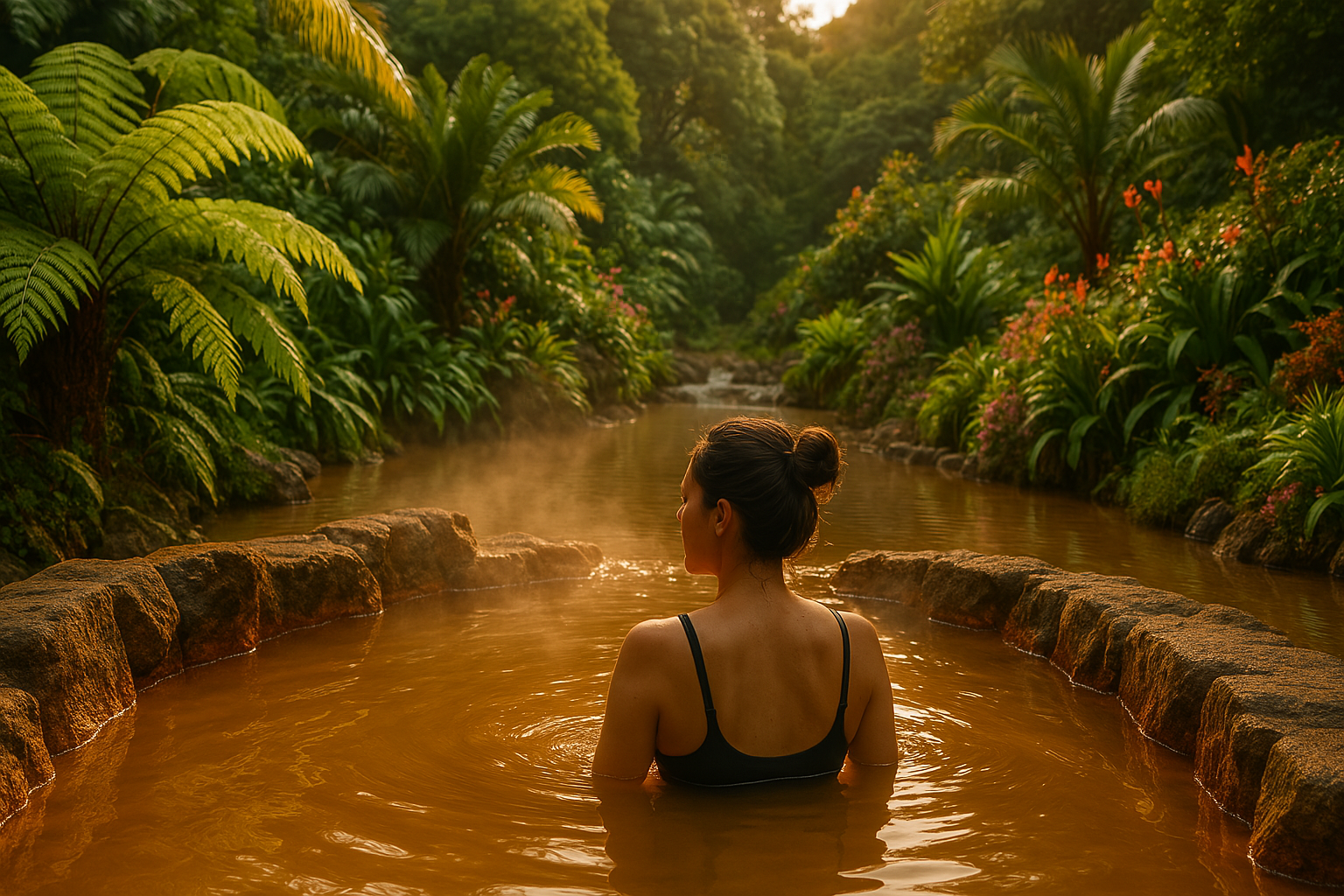If you’ve ever dreamed of a place where lush volcanic peaks meet crater lakes, where whales glide beneath the surface and geothermal pools bubble in the earth, then it’s time to explore the Azores. Often dubbed “Europe’s last hidden gem,” this autonomous Portuguese archipelago in the Atlantic is finally stepping into the spotlight — and 2025 is the perfect time to go.
Whether you’re an adventure seeker, a slow traveler, or someone craving a sustainable island escape, Azores island travel delivers. Let’s dive into what makes these nine islands so magical, how to get there, and what to do once you arrive in Europe’s hidden island paradise.
1. Where Are the Azores?
The Azores are a group of nine volcanic islands located about 1,500 km west of Lisbon in the North Atlantic Ocean. Politically part of Portugal, they feel like a world apart — remote, wild, and refreshingly authentic. The islands include:
- São Miguel (the largest and most visited)
- Terceira
- Faial
- Pico
- São Jorge
- Graciosa
- Flores
- Corvo
- Santa Maria
Each island has its own personality, landscape, and charm — making island-hopping a must for serious explorers.

2. How to Get There
In recent years, Azores island travel has become easier than ever. You can fly into the Azores from:
- Lisbon or Porto: Multiple daily flights via TAP Air Portugal and Azores Airlines
- North America: Seasonal direct flights from Boston, New York, Toronto, and Montreal
- Europe: Connections from Frankfurt, Paris, and London
São Miguel (Ponta Delgada airport) is the main entry point, but inter-island flights and ferries allow easy access to the rest.
3. When to Visit the Azores
The Azores are a year-round destination, but seasons do affect what you’ll see and do:
- Spring (April–June): Blooming hydrangeas and ideal hiking weather
- Summer (July–August): Warmer temps, peak whale-watching, and festivals
- Fall (September–October): Fewer crowds, grape harvests, and stunning sunsets
- Winter (November–March): Quiet, lush, and peaceful — but rainier
For a balanced experience, May or September hit the sweet spot between good weather and smaller crowds.
4. What to See & Do on São Miguel
Known as the “Green Island,” São Miguel is the largest and most diverse of the Azores. Highlights include:
- Sete Cidades: Twin crater lakes of vivid blue and green, surrounded by hiking trails
- Lagoa do Fogo: A volcanic lake nestled within a nature reserve
- Furnas: A geothermal wonderland with hot springs, steam vents, and cozido — a stew slow-cooked in volcanic soil
- Tea plantations: Visit Gorreana Tea Factory — the only tea plantation in Europe
- Whale watching: Departures from Ponta Delgada bring sightings of sperm whales, dolphins, and even blue whales
São Miguel alone offers enough to fill a week — or longer if you want to truly unwind.
5. Island Hopping: What Makes Each Island Unique
While São Miguel is a natural starting point, the other islands each have something special to offer:
- Terceira: Historical charm in Angra do Heroísmo (a UNESCO site), lava caves, and festivals
- Pico: Home to Portugal’s highest mountain and vineyards planted in lava rock
- Faial: A sailor’s haven with the colorful marina at Horta and volcanic Capelinhos
- São Jorge: Dramatic cliffs, cheese factories, and fajas (lava-created flat lands)
- Graciosa: The quietest island, known for its white houses and thermal baths
- Flores: Waterfalls, crater lakes, and the westernmost point of Europe
- Corvo: Tiny and tranquil, with a single village and a volcanic caldera
- Santa Maria: The sunniest island with sandy beaches and dry landscapes
Azores island travel rewards those who go beyond the main island — each journey feels like discovering a new world.
6. Eco-Tourism & Sustainability in the Azores
The Azores are pioneers in sustainable tourism. The entire archipelago is a UNESCO Biosphere Reserve, and the government prioritizes:
- Eco-conscious hotels and guesthouses
- Locally sourced food and organic agriculture
- Marine conservation and responsible whale watching
- Protected hiking trails and geothermal energy
Visitors are encouraged to follow Leave No Trace principles, and tourism companies often support conservation initiatives.

7. Food & Drink: What to Taste in the Azores
Azorean cuisine is hearty, flavorful, and deeply tied to the sea and land. Don’t miss:
- Cozido das Furnas: Stew cooked underground by geothermal heat
- Limpets and octopus stew: Local seafood delicacies
- Queijo São Jorge: Famous semi-hard cheese with a tangy kick
- Passionfruit and pineapple: Grown locally and bursting with flavor
- Local wine: Especially from Pico Island’s UNESCO-listed vineyards
Pair your meal with a glass of vinho verde or a local herbal tea for the full experience.
8. Where to Stay
Accommodations in the Azores range from boutique eco-hotels to family-run guesthouses:
- Furnas Boutique Hotel: A chic spa retreat powered by thermal energy
- Sul Villas & Spa: Oceanfront luxury on São Miguel
- Azorean Cheese House (São Jorge): Stay inside a cheese factory
- Airbnbs: Often include kitchens, terraces, and traditional architecture
Wherever you stay, hospitality in the Azores is warm, personal, and often family-run.
9. Activities for Every Type of Traveler
Whether you want to chill or chase waterfalls, Azores island travel has something for you:
- Hiking: Dozens of marked trails across every island
- Surfing: São Miguel and Santa Maria offer Atlantic swells
- Caving: Explore lava tubes like Algar do Carvão on Terceira
- Hot springs soaking: Terra Nostra Park is a must
- Birdwatching: Spot rare species in Flores and Corvo
Want to relax? Book a thermal spa treatment and listen to the Atlantic waves crash in the distance.
10. Tips for First-Time Visitors
- Pack layers — weather can change quickly, even in summer
- Rent a car on São Miguel for flexibility and access
- Use Azores Getaways or SATA Air for flight + hotel bundles
- Respect nature — the Azores depend on responsible tourism
- Try learning basic Portuguese — locals appreciate the effort
And most of all: slow down. The Azores are made for unhurried exploration.
Conclusion: Why the Azores Should Be Your Next Trip
In a world of over-touristed cities and crowded coastlines, the Azores offer something rare — authenticity, beauty, and breathing room. With dramatic landscapes, warm people, and a deep connection to nature, Azores island travel is the escape you didn’t know you needed.
So why wait? Book that ticket, charge your camera, and get ready to explore one of Europe’s most enchanting secrets.
Have you been to the Azores? Share your favorite island or must-do activity in the comments — and follow WentWorld for more off-the-beaten-path travel inspiration!
Catch up on the top stories and travel deals by subscribing to our newsletter!












Leave a Reply